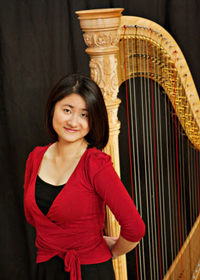by Daniel Hathaway

The space is intimate and the audiences were small (winter seemed still to be keeping people from venturing out), but there was much to admire in both programs.
Nicholas Underhill’s program followed a familiar recital format, beginning with Scarlatti sonatas and a Beethoven sonata before venturing toward the twentieth century and beyond with works by Charles Tomlinson Griffes, Béla Bartók and Underhill himself. He ended with an extravagant piece by Franz Liszt.
Underhill negotiated Scarlatti’s Sonatas in G (K.14) and D (K.29) with flair and accuracy, observing every repeat. He played Beethoven’s e-minor Sonata, op. 90 fluently but downplayed its architecture and color possibilities. It became clear that Underhill was performing on a grand piano with little depth of tone or resonance, which must have restricted his options.
Griffes’ “The Fountain of the Acqua Paula”and “Clouds” from Roman Sketches, op. 7 (1916) received sensitive and atmospheric performances. Bartók’s Out of Doors Suite was appropriately playful, eerie or percussive as the varied movements required.
For two of Nicholas Underhill’s own pieces, Coreopsis (2002), and Nebula (2001), the composer-pianist played from scores for the only time during the recital. The first, “a reflective portrait of an enigmatic flower,” had Scriabinesque leanings: a haze of color with expressive ornaments in the right hand. At fourteen minutes, Nebula represented a long journey into the unknown (“perhaps in space,” the notes said) and its repetitive textures necessarily inspired some daydreaming. It ended as advertised in “a pattern of two static chords that proceeds gradually towards the top of the keyboard, amidst all of the other textures. When the chords reach the top, the journey is over.”
Trimming one Liszt work off the printed program because of its length, Underhill ended with the Mephisto Waltz No. 2, a work with a rich narrative that should be an interpreter’s dream. While the pianist has the piano chops to pull the Devil’s Waltz off, the tale needed more musical punctuation in the form of dynamic changes, breathing points and color changeups. Nonetheless, it put the cap on a challenging and impressive program.

Playing an art deco Salzedo model from Lyon & Healy, Du began with a nicely-paced performance of the Prelude and Presto from J.S. Bach’s first lute suite as transcribed by Marie-Claire Jamet. Then she pointed out some of the features of the modern pedal harp and offered to field a variety of questions from the audience.
That really engaged the listeners — especially two young girls in the front row, who warmed to the exercise and came up with more and more interesting queries. Du returned to her program with Jean-Michel Damase’s Sicilienne Variée, a virtuosic piece that involved some fleet pedal changes and explored the whole range of the instrument.
Violinist Jeanelle Brierley joined Shelly Du for expert performances of Mumford’s three short duos (2011), miniatures that pitted plucks against melodic fragments, moved on to more developed themes and finally gave the violin a dominant role over ostinato figures in the harp.
Du spent the intermission tuning and fielding more questions. “Do you ever play contemporary music to relax?” one listener inquired. Du was perplexed by that notion until she figured out that by “contemporary” he meant “popular,” which took the conversation off in the direction of the role of harps at wedding receptions and hotel lobbies. That was the perfect transition to the next piece, Debussy’s Valse romantique in an arrangement by Kondonassis.
Du ended the evening with a well-wrought, substantial harp sonata by Nicolas Flagello which explored a number of special effects and showed off the performer’s impressive technique and musicality.
There are two concerts yet to come on the Signature Series this season: soprano Deborah Norin-Kuehn on Thursday, April 2, and flutist Brandon George on Monday, April 27.
Published on ClevelandClassical.com March 13, 2015.
Click here for a printable copy of this article



